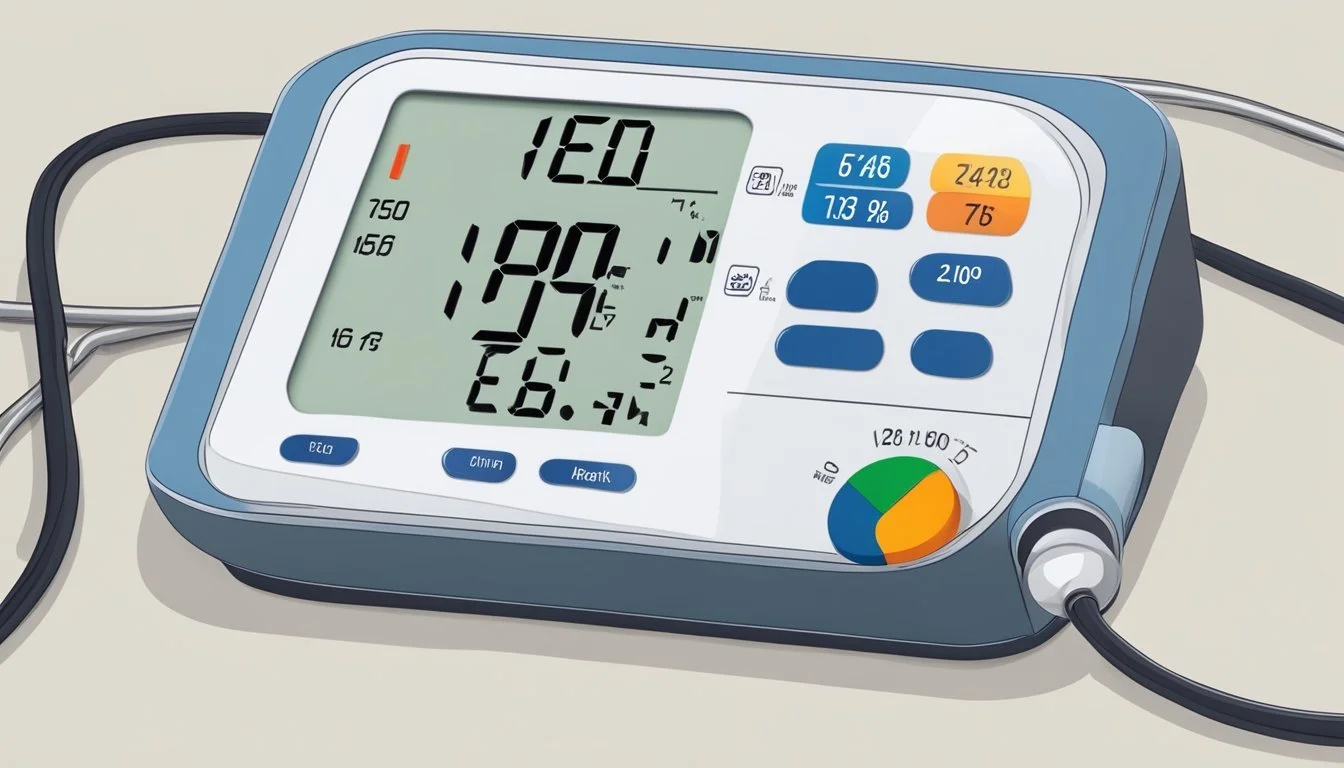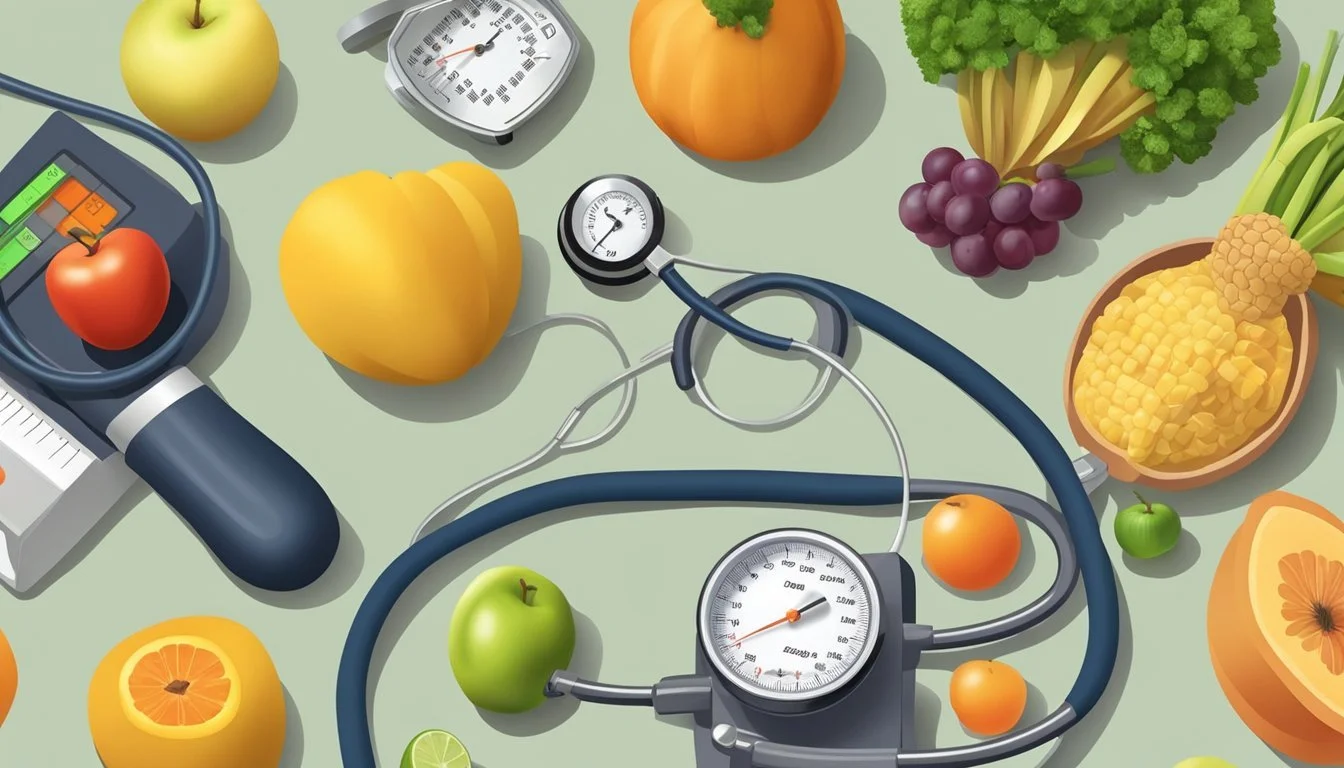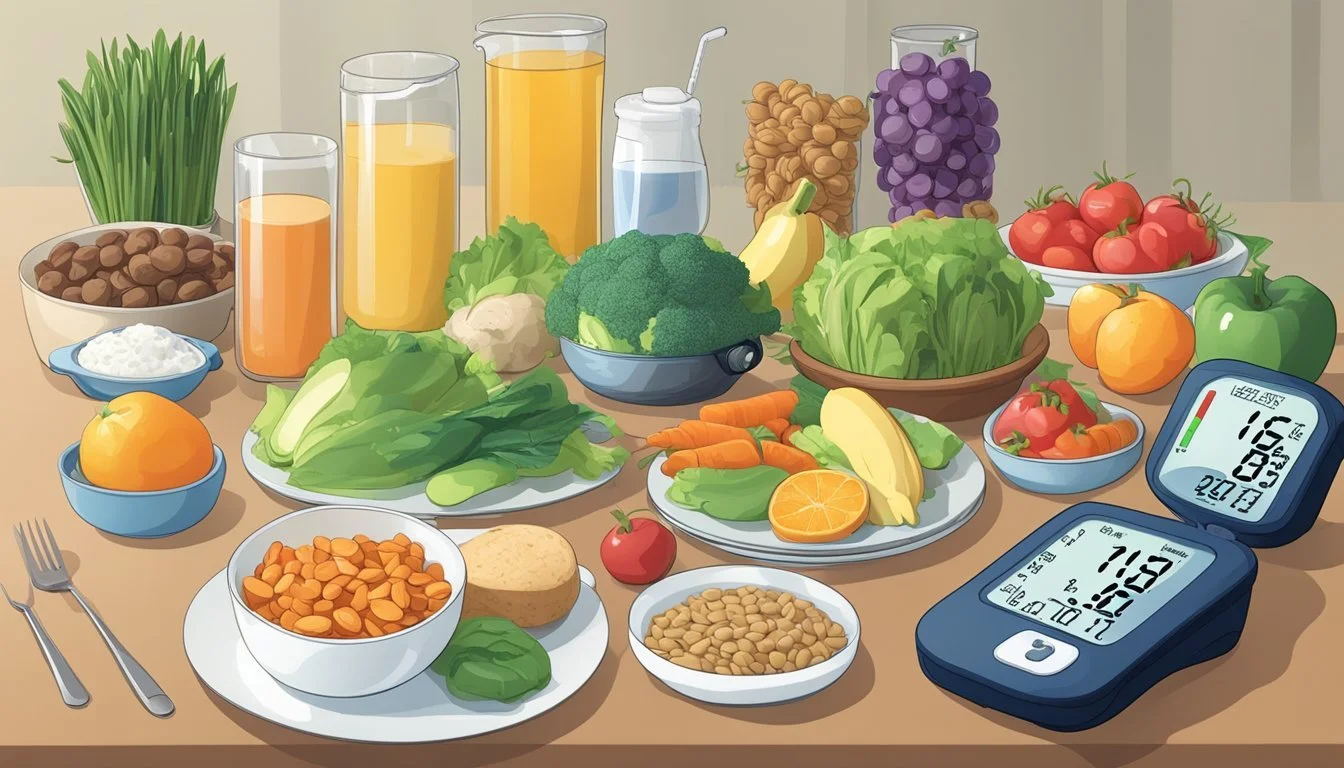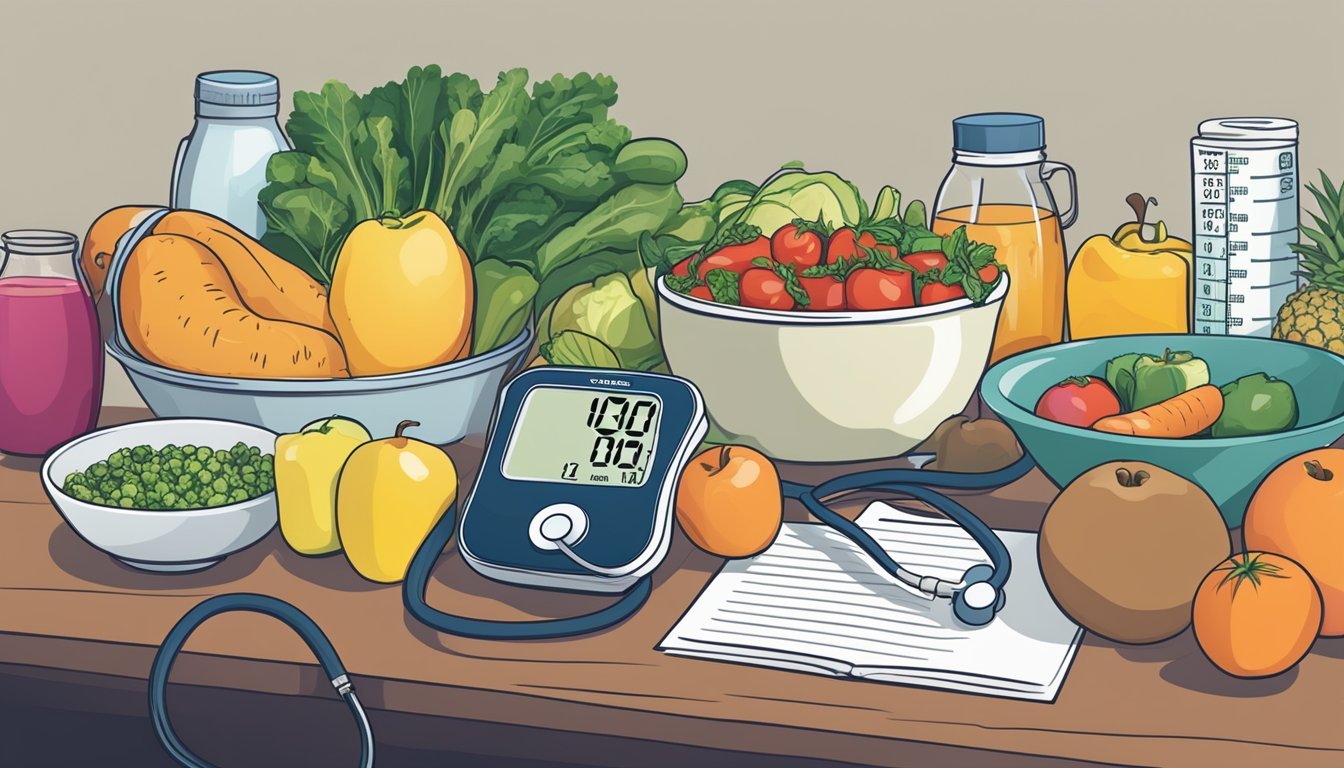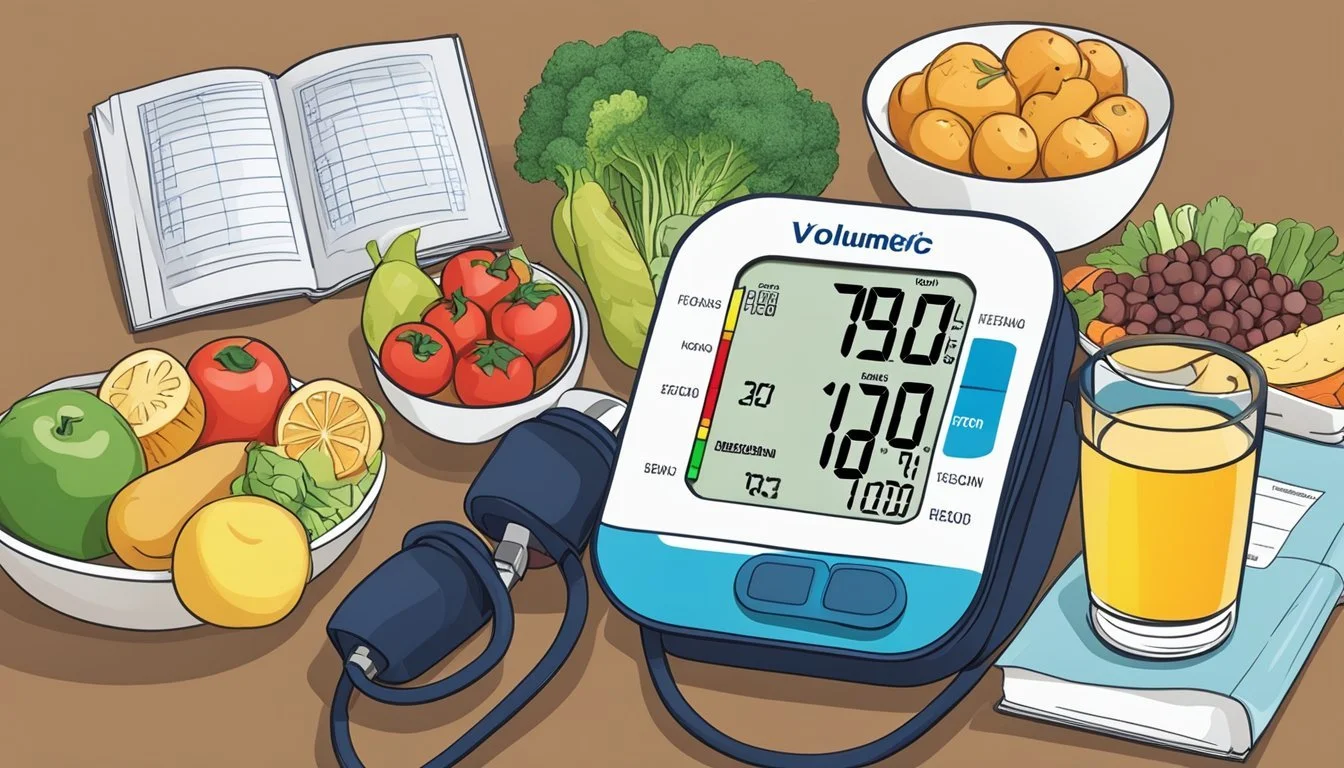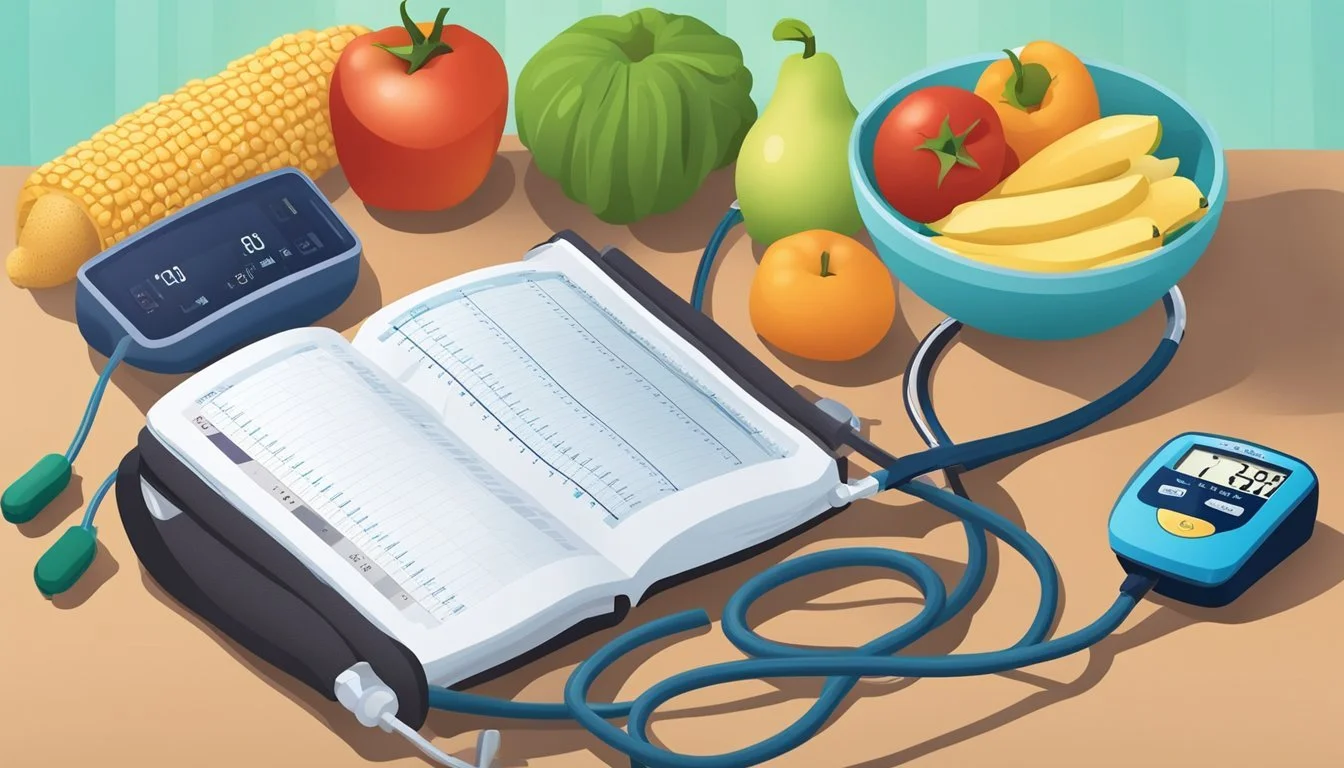How does the Volumetrics Diet Affect Blood Pressure?
Unveiling the Health Impacts
The Volumetrics diet, developed by nutritionist Barbara Rolls, emphasizes eating low-density foods that have fewer calories per gram, allowing one to eat larger portions while still reducing caloric intake. This diet is not just about losing weight, but also aims to transform eating habits into a healthier, sustainable lifestyle. By encouraging the consumption of fruits, vegetables, whole grains, and lean proteins, the Volumetrics diet naturally reduces the intake of high-sodium and high-fat foods, which are contributors to hypertension and heart disease.
Blood pressure, a primary indicator of cardiovascular health, can be significantly impacted by dietary choices. The Volumetrics approach facilitates the intake of foods rich in potassium, calcium, and magnesium—all of which have been associated with lower blood pressure and a reduced risk of hypertension. Given that hypertension is a risk factor for stroke and heart disease, diets that support blood pressure regulation are critical in preventing such conditions.
While weight management is a key aspect of the Volumetrics diet, the potential benefits extend beyond mere weight loss. Adopting this diet may have a holistic impact on an individual's health profile, including blood pressure control. The Volumetrics diet not only aligns with general dietary guidelines for cardiovascular health but also presents a framework that can lead to long-term lifestyle changes, reinforcing the importance of diet in the management of blood pressure and overall heart health.
Overview of Blood Pressure
Blood pressure is the force that blood exerts on the walls of the arteries as it circulates through the body. It is a critical indicator of cardiovascular health, typically measured using two numbers: systolic pressure, indicating the pressure during the heart's contraction, and diastolic pressure, representing the pressure between beats when the heart is at rest.
Normal blood pressure is categorized by measurements lower than 120/80 mmHg. Elevated blood pressure occurs with systolic numbers between 120-129 mmHg and diastolic numbers less than 80 mmHg. Beyond these values, hypertension, or high blood pressure, is diagnosed. Hypertension is further classified into two stages:
Stage 1 Hypertension: Systolic between 130-139 mmHg or diastolic between 80-89 mmHg.
Stage 2 Hypertension: Systolic at least 140 mmHg or diastolic at least 90 mmHg.
In contrast, hypotension refers to blood pressure that is too low, typically below 90/60 mmHg, and can lead to symptoms such as dizziness or fainting.
Maintaining blood pressure within a healthy range is vital, as hypertension increases the risk of severe health conditions, including heart attack, stroke, and other forms of cardiovascular disease. The measurement of blood pressure is a routine part of medical assessments because early detection and management of abnormal blood pressure are essential for preventing complications.
It is imperative for individuals to monitor their blood pressure regularly and seek medical guidance should their readings fall outside of the standard ranges. Lifestyle choices, including diet and exercise, play significant roles in the regulation and management of blood pressure.
Basics of the Volumetrics Diet
The Volumetrics Diet is a nutrition plan that focuses on low-calorie, high-volume foods to promote satiety and weight management. Central to this diet is the concept of energy density, which refers to the number of calories per gram of food. Foods with lower energy density, such as vegetables and fruits, provide a larger portion size for fewer calories, helping individuals feel full without consuming a high number of calories.
The diet categorizes foods into four groups:
Category 1: Very low-density — Non-starchy fruits and vegetables, nonfat milk, and broth-based soup
Category 2: Low-density — Starchy fruits and veggies, grains, breakfast cereal, low-fat meat, legumes, and low-fat mixed dishes
Category 3: Medium-density — Meat, cheese, pizza, fries, salad dressing, bread, pretzels, ice cream, and cake
Category 4: High-density — Crackers, chips, chocolate candies, cookies, nuts, butter, and oil
Whole grains, rich in fiber, and foods high in water content are encouraged. Protein sources should be lean, and low-fat dairy products are preferred to those high in saturated fat.
The Volumetrics Diet aligns with sound nutrition principles by promoting the consumption of foods that are not only low in calories but also nutritious. It emphasizes the importance of understanding the energy density of foods and encourages physical activity to complement the dietary aspects of the lifestyle change.
By providing a flexible approach, the Volumetrics Diet aims to prevent the cycle of weight loss and gain while supporting controlled blood pressure with its emphasis on whole, nutrient-dense foods.
Impact on Blood Pressure
The Volumetrics diet, known for promoting satiety through high-volume, low-calorie foods, is associated with beneficial effects on blood pressure. This dietary approach emphasizes the consumption of foods that are rich in water and low in energy density, which may positively influence blood pressure levels.
Blood Pressure Reduction Mechanisms
The Volumetrics diet could lower blood pressure by decreasing overall calorie intake and increasing the consumption of fruits and vegetables. These food groups are high in potassium, magnesium, and calcium—minerals known for their potential to mitigate hypertension. Additionally, because the diet promotes low-sodium options, it aligns with antihypertensive dietary recommendations. The Volumetrics plan also encourages the incorporation of low-fat dairy products which, analogous to the DASH diet, may further aid in blood pressure regulation.
Potassium: Assists in balancing the amount of sodium in cells, which is critical for maintaining normal blood pressure.
Magnesium: Plays a role in relaxing blood vessels, enabling easier blood flow.
Calcium: Essential for smooth muscle function in the blood vessels.
Comparison with Other Dietary Approaches
When compared with other dietary approaches, the Volumetrics diet shares similarities with the DASH diet, which is specifically designed to combat high blood pressure and has been clinically proven to reduce blood pressure levels. Both diets emphasize whole grains, fruits, vegetables, and low-fat dairy, all conducive to lower blood pressure. However, the Volumetrics diet does not prescribe specific servings of these food groups as the DASH diet does.
Dietary Feature Volumetrics Diet DASH Diet Sodium Restriction Recommended Strictly Limited Fruit and Vegetable Intake High, no specific limits 4-5 servings of each per day Low-fat Dairy Encouraged 2-3 servings per day Whole Grains Encouraged 6-8 servings per day
It's noted that both diets, through their low-salt and potassium-rich food items, can serve as a non-pharmacological strategy for individuals with high blood pressure. They could potentially reduce the need for antihypertensive medication, especially in normotensive or pre-hypertensive individuals. The effectiveness of these dietary patterns may vary slightly depending on the individual's age, race, and body mass index (BMI).
Dietary Components and Nutrient Intake
The Volumetrics diet focuses on foods that provide high nutritional value with lower calorie density, which plays a crucial role in managing blood pressure.
Fruits and Vegetables
Fruits and vegetables are central to the Volumetrics diet due to their high water and nutrient content, and low energy density. They are rich in potassium, which can help to lower blood pressure by counteracting the effects of sodium. Incorporating a variety such as leafy greens, cucumbers, oranges, and apricots is encouraged.
Whole Grains and Fiber Intake
Whole grains are another key component of this diet. They are a source of essential fiber, aiding in digestion and providing a feeling of fullness. This can contribute to better regulation of blood pressure by promoting a healthy body weight. Choices include oats, brown rice, and whole wheat.
Protein Sources
Protein should be included but with a preference for lower-fat sources. Legumes like lentils and beans are favored, as well as lean meats. These options support heart health by providing the necessary nutrients without the added fats found in fatty meats, which can be detrimental to blood pressure.
Dairy Product Selection
The diet recommends low-fat dairy products due to their calcium content without the high fat content that can influence blood pressure negatively. Options like skim milk, low-fat yogurt, and low-fat cheese are suggested over their full-fat counterparts.
Fat and Oil Choices
Healthy fats are not excluded. Unsaturated fats, especially those from olive oil, nuts, and seeds, are included but in moderation. These fats are important for overall health but should be managed to avoid excessive calorie intake, which can affect weight and blood pressure.
Lifestyle and Behavioral Considerations
In the context of the Volumetrics diet and its impact on blood pressure, it is imperative to understand that lifestyle and behavioral factors contribute significantly to cardiovascular health outcomes. Exercise habits, alcohol consumption, and weight management play vital roles in optimizing the effects of any dietary approach on blood pressure levels.
Exercise and Physical Activity
Regular exercise and physical activity are foundational components of effective blood pressure control. They not only complement the Volumetrics diet by promoting caloric expenditure but also:
Improve cardiovascular strength: Consistent aerobic exercises such as walking, cycling, and swimming increase heart efficiency.
Enhance weight loss: Combined with a calorie-conscious diet like Volumetrics, exercise aids in reducing body weight, which can lower blood pressure naturally.
Alcohol Consumption
Alcohol intake must be moderated as excessive consumption is linked to an increase in blood pressure. The guiding principles for alcohol consumption in the context of blood pressure management include:
Limiting intake: Men should restrict alcohol to no more than two drinks per day, and women should limit to one.
Understanding portions: Recognizing standard drink sizes can help maintain moderate consumption levels.
Weight Management and Obesity
Weight and obesity are closely linked to hypertension, thus managing body weight is critical. Adherence to the Volumetrics diet, which encourages low-density, high volume foods can result in:
Progressive weight loss: By filling up on water-rich foods that are less calorie-dense, individuals can feel satiated while consuming fewer calories.
Reduction in obesity-related risks: Maintaining a healthy weight through dietary choices and lifestyle changes can diminish the likelihood of developing heart disease.
Engagement in regular physical activities, mindful alcohol consumption, and diligent weight management through the Volumetrics diet are essential strategies for maintaining healthy blood pressure levels.
Health Risks and Benefits
The Volumetrics diet, known for its emphasis on low-calorie, high-volume foods, may influence cardiovascular health and diabetes risk. By favoring foods that are less calorie-dense, it encourages a balanced intake that could impact these health areas.
Cardiovascular Health Benefits
The Volumetrics diet helps moderate blood pressure, a key factor in cardiovascular health, by promoting the consumption of fruits, vegetables, and whole grains—all known to be beneficial for heart health. Fruits and vegetables are rich in potassium, which aids in balancing sodium levels in the body, hence helping to maintain healthy blood pressure. Furthermore, whole grains contribute to lower cholesterol levels, reducing the risk of heart disease and stroke.
Diabetes and Metabolic Syndrome Risk
The diet's low-glycemic options can stabilize blood sugar levels, which is crucial in managing and preventing type 2 diabetes. The emphasis on plant-based foods and lean meats, coupled with limitation of high-fat and sugary items, is conducive to reducing the risk of metabolic syndrome—a cluster of conditions that raises the risk of heart disease, stroke, and diabetes. Here, the nutrient-rich yet lower-calorie approach works to mitigate these risks without drastic caloric restrictions that could otherwise cause metabolic disruptions.
Applying the Volumetrics Diet in Daily Life
The Volumetrics Diet emphasizes consuming foods that are low in calories but high in volume to help you feel full while managing blood pressure. This approach requires strategic meal planning and an understanding of food categories to ensure long-term success and sustainable lifestyle changes.
Meal Planning and Preparation
When individuals incorporate the Volumetrics Diet into their daily routine, meal planning becomes essential. Their focus shifts to recipes that include fruits, vegetables, and broths, which are central to the diet's philosophy. They often opt for sizzling vegetable stir-fries, hearty broths, and quinoa paired with steamed veggies for balanced meals. Meal prep might involve batch-cooking these essentials that can be mixed and matched to save time and maintain diet adherence throughout the week.
Long-Term Adherence to the Diet
For long-term success on the Volumetrics Diet, individuals must view it not as a temporary plan but as a lifelong approach to eating. This means embracing the cooking methods and eating patterns as part of their regular lifestyle. Finding a rotation of enjoyable and satiating recipes helps in avoiding food boredom and making this a sustainable change.
Understanding Food Categories
The diet categorizes food based on its energy density. Foods are divided into categories where fruits and vegetables fall into the lowest density group, and foods like candy and cheese are in the highest. Understanding these categories is critical for individuals. They learn to limit high-calorie, low-nutrient foods, customizing their meals and snacks to fit within the right density range to manage both appetite and blood pressure effectively.
Comparative Analysis with Other Diets
When examining the impact of the Volumetrics diet on blood pressure, it is important to consider how this diet compares to others known for their cardiovascular benefits, specifically the DASH and Mediterranean diets. This comparison is pivotal in understanding the potential of Volumetrics as a dietary approach to managing blood pressure.
Volumetrics vs. DASH Diet
The Dietary Approaches to Stop Hypertension (DASH) diet is widely recognized for its positive impact on blood pressure. In contrast to the Volumetrics diet's emphasis on low-calorie, high-volume foods, the DASH diet focuses on nutrients that are key in blood pressure regulation, such as potassium, calcium, and magnesium, and recommends specific servings of food groups.
Key Components:
DASH Diet: Limits sodium intake; emphasizes fruits, vegetables, whole grains; includes low-fat dairy, lean proteins, and nuts.
Volumetrics Diet: Encourages consumption of low-density foods; does not prescribe specific nutrient targets.
While both diets advocate for reduced intake of saturated fat and added sugars, the DASH diet specifically restricts red meat and includes portion recommendations, which the Volumetrics diet does not. The American Heart Association endorses the DASH diet for its demonstrated effectiveness at lowering blood pressure.
Volumetrics vs. Mediterranean Diet
The Mediterranean Diet is applauded for its cardiovascular benefits, though it diverges from the Volumetrics diet in composition and cultural dietary patterns. This diet is rich in plant-based foods, healthy fats, and includes a moderate intake of fish and poultry.
Key Comparisons:
Mediterranean Diet: High in monounsaturated fats from olive oil; includes fish, moderate dairy and wine; limited red meat.
Volumetrics Diet: Focuses on food's water content to reduce energy density; permits a broader choice of foods without specific macronutrient focus.
Both diets support the inclusion of a variety of foods and recommend physical exercise as part of a healthy lifestyle. However, the Mediterranean diet has a greater emphasis on healthy fats and typically contains more fat than the Volumetrics diet, given its inclusion of olive oil and nuts. Despite their differences, both diets aim to promote satiety and heart health without stringent calorie counting.
Challenges and Considerations
Adopting the Volumetrics diet can impact blood pressure positively; however, individuals may face challenges regarding dietary restrictions and societal factors. Properly managing the intake of certain foods and navigating social settings are crucial to sustaining the diet's benefits.
Restrictions and Food Limitations
The Volumetrics diet emphasizes eating foods that are low in calorie density but high in volume, such as non-starchy vegetables and broth-based soups. It requires a reduction in processed foods, added sugars, and foods high in salt intake. The diet's restrictions center around:
Off-limits: Avoidance of high-calorie, high-density foods
Healthy foods: Preference for nutrient-dense items like fruits and vegetables
Limitation: Moderate consumption of sweets and higher-fat meats
Adherents may find it challenging to adjust to these restrictions, especially if they previously consumed a diet rich in processed foods and added sugars.
Societal and Emotional Factors
The Volumetrics diet not only involves changes in food choices but also in lifestyle, which can be influenced by societal and emotional factors. Key considerations include:
Dining Out: Finding appropriate options at restaurants can be challenging, as many menus are not designed with low-calorie density dishes in mind.
Social Gatherings: Social events often revolve around foods that may not align with the Volumetrics principles, such as dishes high in sodium or sweets.
Support from family and friends is essential for individuals to maintain these dietary changes without feeling socially excluded or emotionally stressed.
Conclusion
The Volumetrics diet, recognized for promoting weight management, possesses potential benefits for blood pressure control. This diet emphasizes the consumption of foods high in water content, providing a sense of satiety while being low in calories. By facilitating weight loss through high-volume, low-calorie foods, it may indirectly contribute to lowering blood pressure, thereby reducing the risk of heart disease.
Key aspects of the Volumetrics diet:
Focus on fruits, vegetables, whole grains, and lean proteins.
Encourages a long-term approach to healthy eating rather than quick-fix diets.
Incorporates principles of satiety and volume to prevent hunger.
Evidence suggests that weight loss is linked with significant reductions in systolic and diastolic blood pressure. Since the Volumetrics diet aims at sustainable weight loss, it may serve as a valuable dietary approach for individuals with hypertension. However, it should be noted that individual responses to dietary changes vary, and one should consult healthcare providers to determine the best dietary approach.
Considerations for blood pressure management:
Balanced nutrition is crucial for maintaining ideal blood pressure levels.
Lifestyle modifications, including diet and exercise, play a pivotal role in hypertension prevention and management.
The Volumetrics diet is considered safe and nutritionally sound. It aligns with the dietary guidelines advocated by numerous health organizations and doctors, reinforcing its appropriateness as a long-term lifestyle strategy for not only weight loss but also for overall cardiovascular health enhancement.

